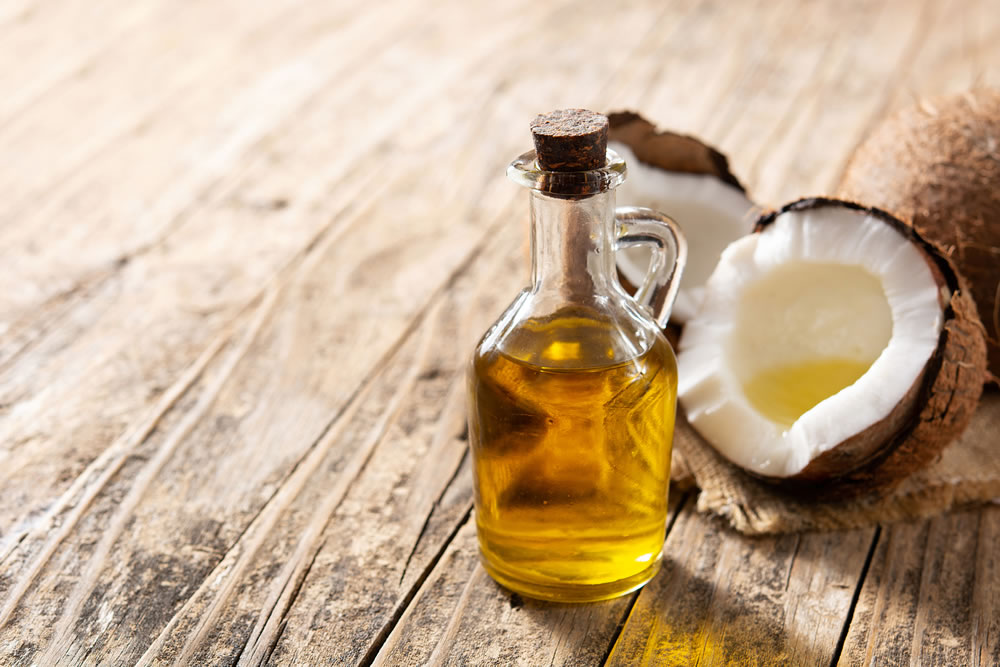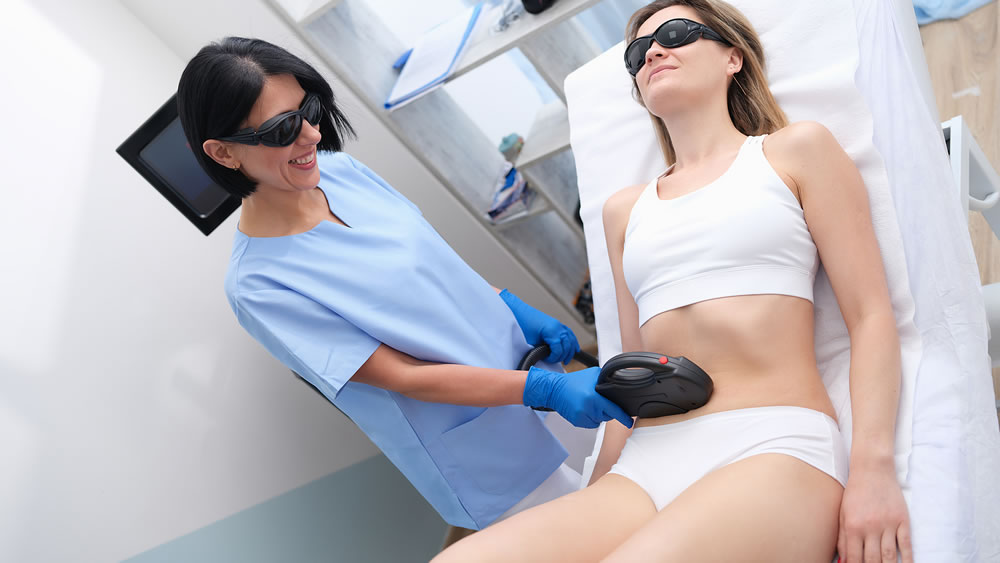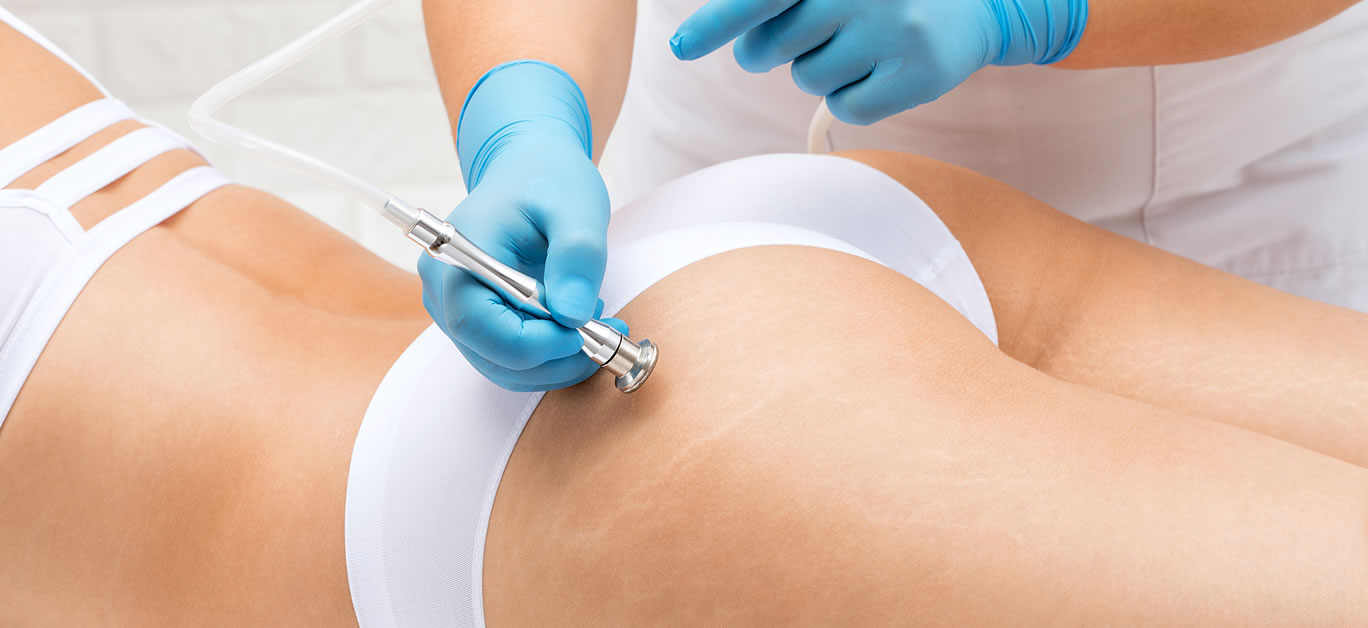Stretch marks are common and most women, and many men, experience them at some point in their lives. Despite the fact that they are entirely normal, they can be a source of dissatisfaction, too – and while few have managed to prevent them appearing where possible, many of us will find ourselves seeking out ways to get rid of them.
They appear because of the changes our bodies go through – from puberty to pregnancy and rapid weight fluctuations, too – and are a type of scar that develops from the skin stretching or shrinking over a short space of time, which causes the elastin and collagen within it to rupture. Essentially, this damages the skin, but it’s as it heals that the marks may begin to appear. Fluctuating hormone levels can affect how dramatically you’ll suffer from them, as it varies from person to person.
Natural treatments

Body Boom Coffee Scrub
Most commonly appearing on the stomach, hips and thighs, they can be difficult to hide during the spring and summer months, but the good news is that, for the most part, they do fade quite substantially over time. And in the meantime, there are some great ways you can start to reduce their appearance so that they are less prominent, giving you the confidence boost that you need to get out there and enjoy life.
You may have heard in the past that caffeine has been shown to help reduce the appearance of cellulite – and it offers similar benefits when it comes to stretch marks. This natural marvel is a powerful tonic, and can be found in this popular body scrub by Body Boom, which is made in Poland and packed with natural goodness including the very finest coffee along with pink Himalayan salt and raw brown sugar to up the exfoliation factor and argan and almond oils to nourish and moisturise the skin. It also contains vitamin E – a natural anti-inflammatory and skin-regenerating agent which can help to minimise the appearance of stretch marks and scars.
Aloe vera
Aloe vera has long been seen as a great natural treatment for skin, and is most commonly used to help soothe sunburn thanks to its cooling, soothing and moisturising properties. But it’s also a powerful tonic when it comes to stretch marks, with its anti-inflammatory and skin-repairing properties helping to aid healing and eventually, fade those unwanted marks. For optimal results, apply pure aloe vera, directly from a plant, after your daily shower and watch your stretch marks improve over time.
Coconut oil
Coconut is another natural tonic that when it comes to the skin, seems to be able to do it all. Virgin coconut oil, in particular, is intensely moisturising and can help the skin to maintain its natural protective barrier – as well as soothing redness and promoting healing.
It stands to reason, then, that it’s also a handy secret weapon to have up your sleeve when it comes to stretch marks and, massaged into the skin daily, has been shown to both help reduce their appearance and prevent them from developing in the first place. So, if you know you’re at risk from developing stretch marks – for example, if you’ve recently become pregnant – then adding coconut oil to your regime could help you to get ahead of them.
Aesthetic and cosmetic treatments

Laser or light therapy
Laser therapy has emerged as a powerful treatment for a whole host of skin-related afflictions over recent years, and that includes stretch marks. Using pulsed dye lasers to deliver intense light to the affected areas, it’s generally performed by a cosmetic surgeon or dermatologist, and as well as improving the overall appearance of stretch marks, it has been shown to boost collagen production over time.
The downside is that results aren’t instant, and it can take up to 20 treatments to achieve the desired results. Treatment can be expensive, too – but if you have the time and the money, then at the end of your course, you can expect to see improvements of up to 60 per cent.
Platelet rich plasma with ultrasound
Another high-tech treatment that has been shown to boost collagen production within the skin, platelet rich plasma (PRP) treatment might sound a little bit gruesome, but it’s not as bad as you think. PRP therapy uses platelet-rich plasma extracted from your own blood prior to the procedure; this is the first step of treatment, before your skin is cleaned thoroughly and the target area is numbed with a local anaesthetic.
The ultrasound comes into play during the plasma injecting process, by helping to guide the treatment into exactly the right spots. The treatment works by stimulating the production of new collagen and elastin in the skin, thus helping it to regenerate and repair itself.






















